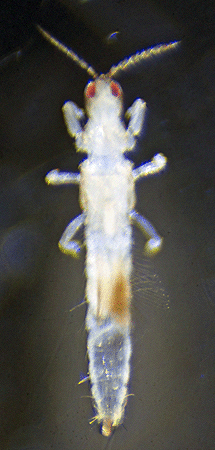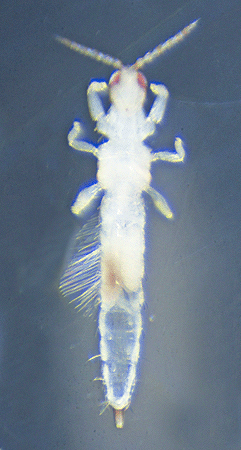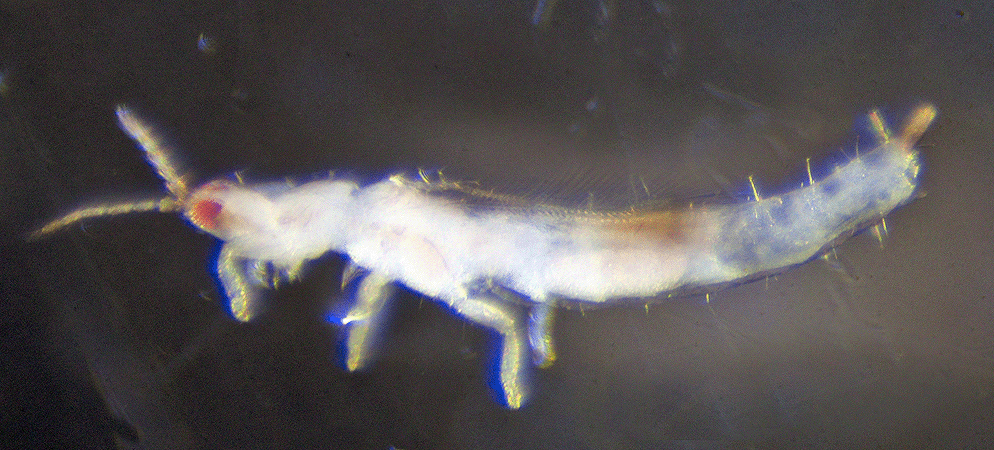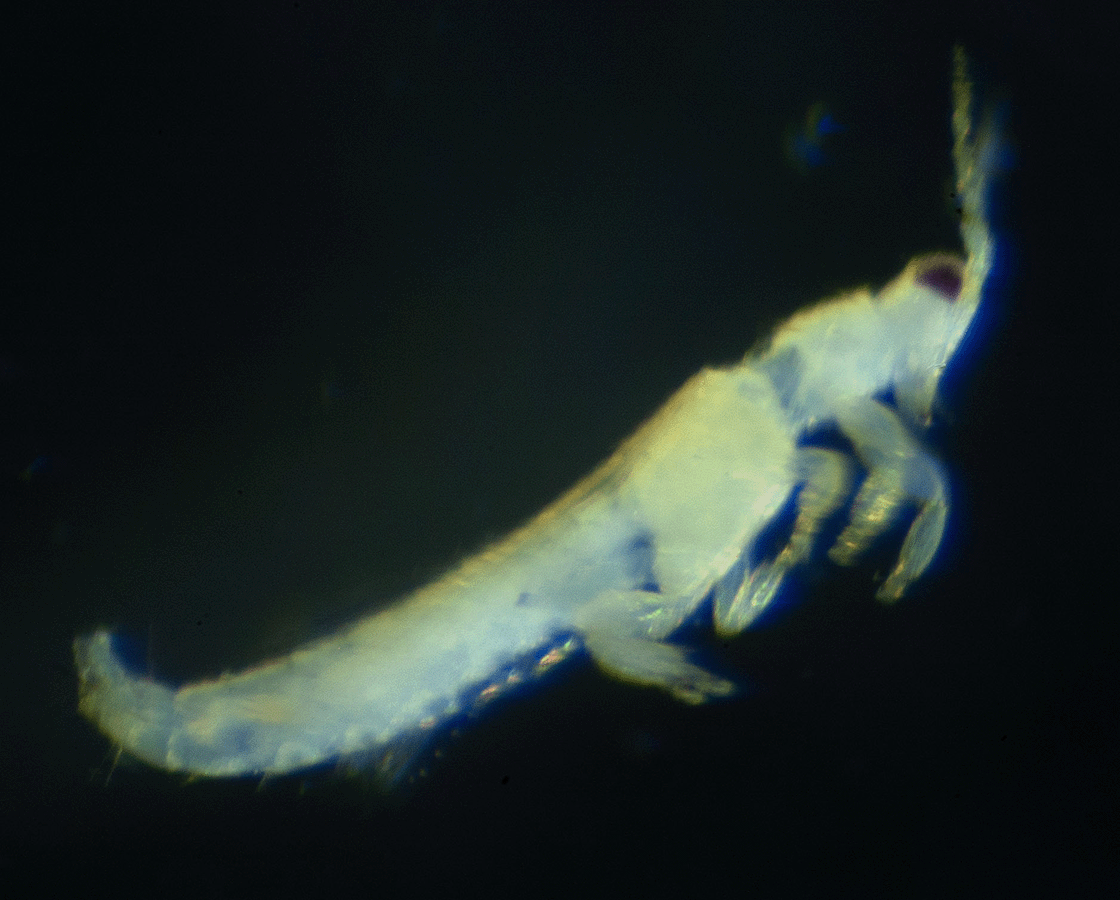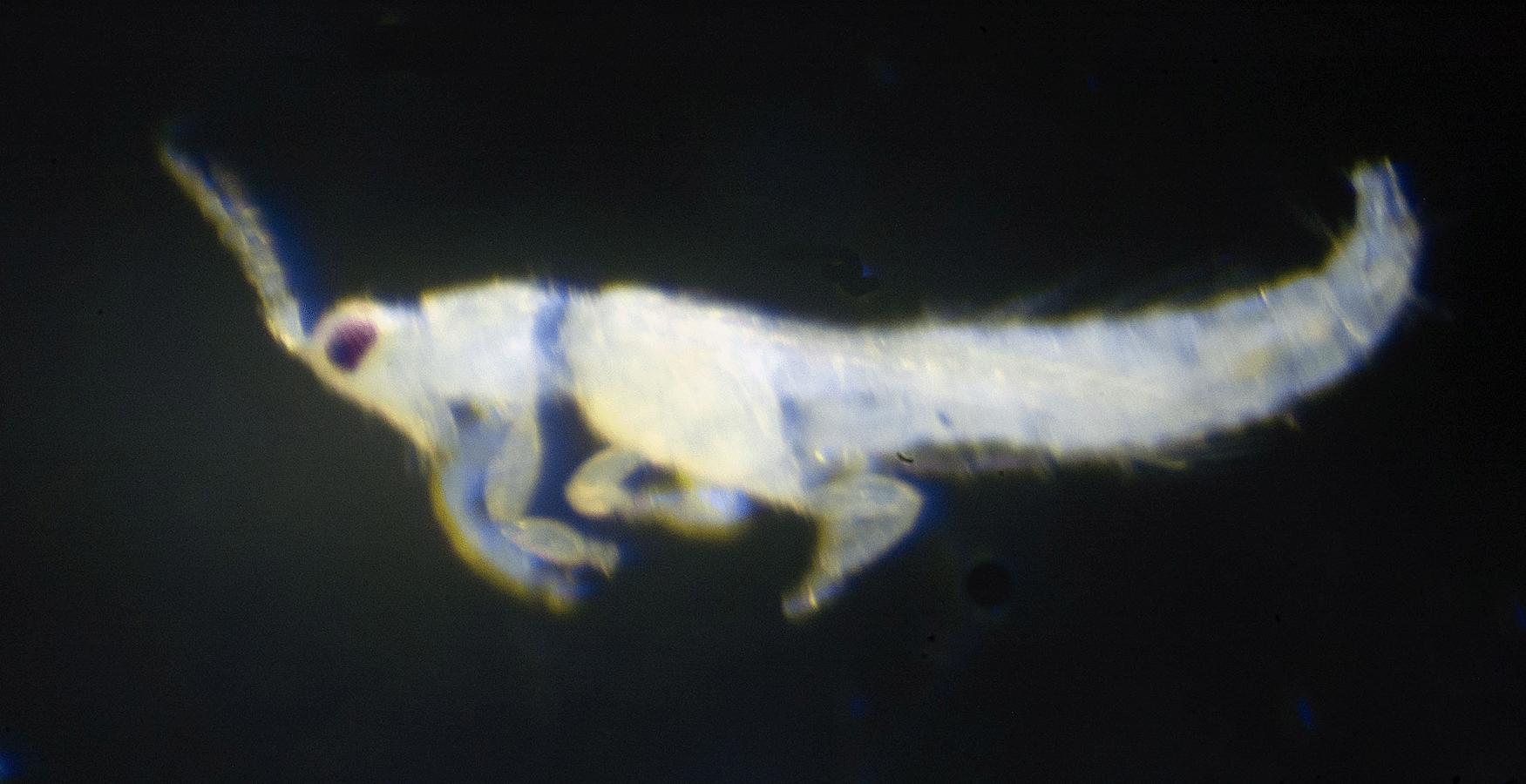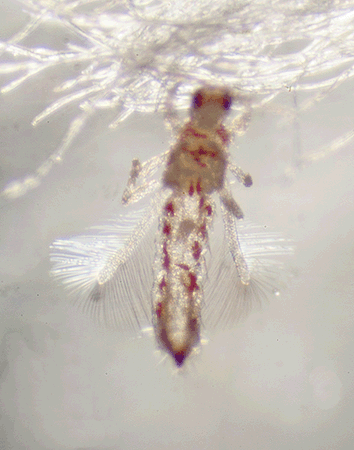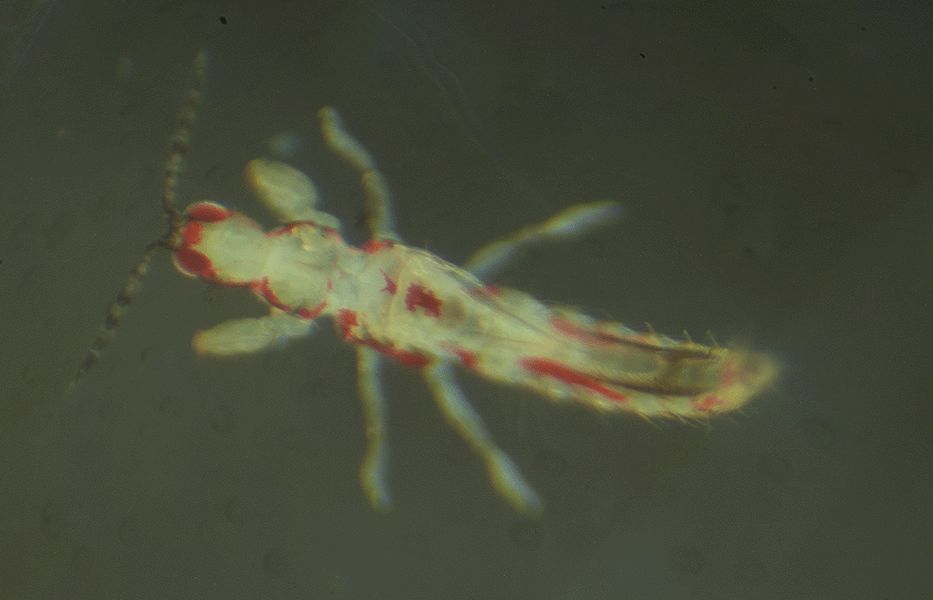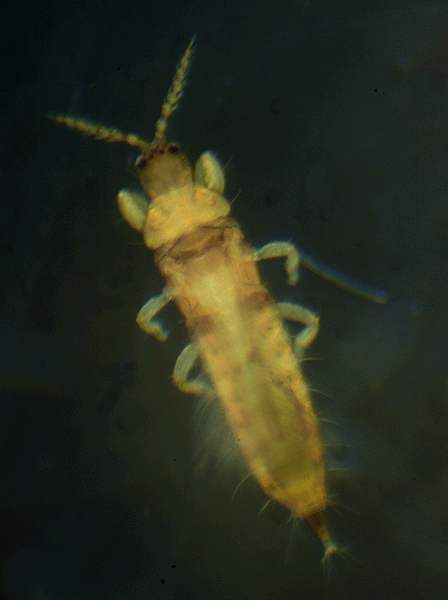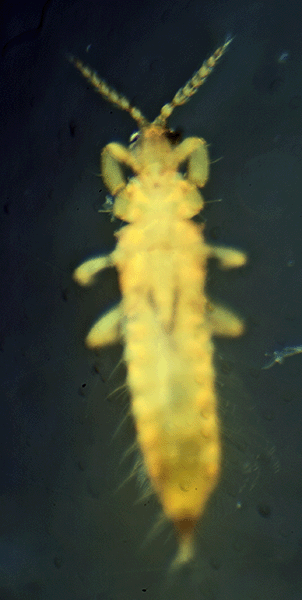Order Thysanoptera (Thrips) in the Christopher B. Smith Preserve
Order Thysanoptera Characteristics: Thrips are slender, cigar-shaped, tiny insects. Most are 1 mm long or less. Adults have fringed wings. The order name, "Thysanoptera," is derived from the Greek word "Thysanos," meaning "fringe," and "pteron," meaning "wing." The common name, "thrips," is Greek for "wood louse;" the word refers to one or more of these insects.
Thrips feed on both plants and animals by puncturing tissue and sucking juices. Many thrips species are considered pests because they feed on plants having commercial value. Other thrips are considered beneficial because they eat the fluids of harmful insects and mites. Still others feed on fungal spores or pollen. All thrips have asymmetrical mouthparts, with the right mandible reduced in size and the left mandible larger and formed into a narrow stylet for piercing plant or animal tissue.
There are 5,000 described thrips species. Most are plant feeders, preferring pollen and plant materials harvested from the outer layer of plant tissue. In the process of feeding, some flower-feeding thrips pollinate flowers, but they also damage plants. Thrips probably communicate with chemical secretions. Chemicals may also serve as predator deterrents. Some thrips form colonies with reproductive queens and nonreproductive soldier castes, somewhat like ant colonies. Many thrips form galls on plants when they feed and lay eggs.
Thrips have metamorphosis that is intermediate between gradual and complete metamorphosis. An egg hatches, followed by two wingless nymph instars. Next a prepupal stage lasts about one day. This is followed by at least one, and in some species two pupal stages. During the pupal stage(s) wing-buds and reproductive structures develop. The final stage is the adult. In some species, male thrips develop from unfertilized eggs and females develop from fertilized eggs. In other species, females develop from unfertilized eggs and males from fertilized eggs. It is also possible that bacteria living within thrips cells determine the sex of an individual.
Interactions in the Smith Preserve: Thrips limit populations of some organisms and provide food for others. More than 20 plant viruses are transmitted by thrips. A few tiny wasps parasitize thrips eggs and nymphs, while aphid wasps, minute flower bugs, and mites prey on nymphs and adults.
Family |
Species Name |
Common Name |
Aeolothripidae |
Unknown |
|
Phlaeothripidae |
Gynaikothrips ficorum |
|
Phlaeothripidae |
Unknown |
|
Phlaeothripidae |
Unknown |
|
Phlaeothripidae |
Unknown |
|
Phlaeothripidae |
Unknown |
|
Thripidae |
Selenothrips rubrocinctus |
|
Thripidae |
Unknown |
|
Thripidae |
Unknown |
|
Unknown |
Unknown |
|
Unknown |
Unknown |
|
Unknown |
Unknown |
|
Unknown |
Unknown |
|
Unknown |
Unknown |
|
Unknown |
Unknown |
|
Unknown |
Unknown |
|
Unknown |
Unknown |
|
Thripidae |
Unknown |
|
Unknown |
Unknown |
|
Unknown |
Unknown |
|
Unknown |
Unknown |
|
Unknown |
Unknown |
|
Unknown |
Unknown |
|
Unknown |
Unknown |
|
Unknown |
Unknown |
|
Unknown |
Unknown |
Family Aeolothripidae Unknown Species ... Predatory Thrips
|
Family Phlaeothripidae Gynaikothips ficorum ... Cuban Laurel Thrips
|
Family Phlaeothripidae Unknown Species ... Tube-Tailed Thrips
|
Family Phlaeothripidae Unknown Species ... Tube-Tailed Thrips
|
Family Phlaeothripidae Unknown Species ... Tube-Tailed Thrips
|
Family Phlaeothripidae Unknown Species ... Tube-Tailed Thrips
|
Family Thripidae Selenothrips rubrocinctus ... Redbanded Thrips
|
Family Thripidae Unknown Species ... Unknown Common Name
|
Family Thripidae Unknown Species ... Unknown Common Name
|
Unknown Family Unknown Species ... Unknown Common Name
|
Unknown Family Unknown Species ... Unknown Common Name
|
Unknown Family Unknown Species ... Unknown Common Name
|
Unknown Family Unknown Species ... Unknown Common Name
|
Unknown Family Unknown Species ... Unknown Common Name
|
Unknown Family Unknown Species ... Unknown Common Name
|
Unknown Family Unknown Species ... Unknown Common Name
|
Family Thripidae Unknown Species ... Unknown Common Name
|
Unknown Family Unknown Species ... Unknown Common Name
|
Unknown Family Unknown Species ... Unknown Common Name
|
Unknown Family Unknown Species ... Unknown Common Name
|
Unknown Family Unknown Species ... Unknown Common Name
|
Unknown Family Unknown Species ... Unknown Common Name
|
Unknown Family Unknown Species ... Unknown Common Name
|
Unknown Family Unknown Species ... Unknown Common Name
|
Unknown Family Unknown Species ... Unknown Common Name
|

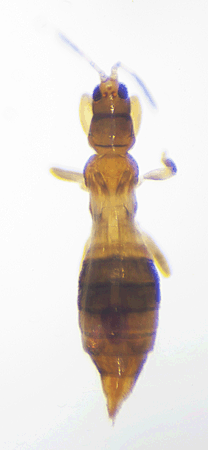
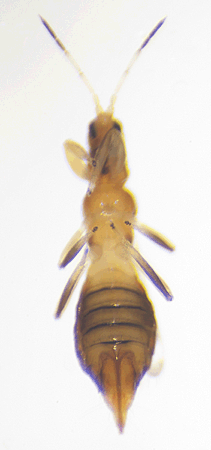
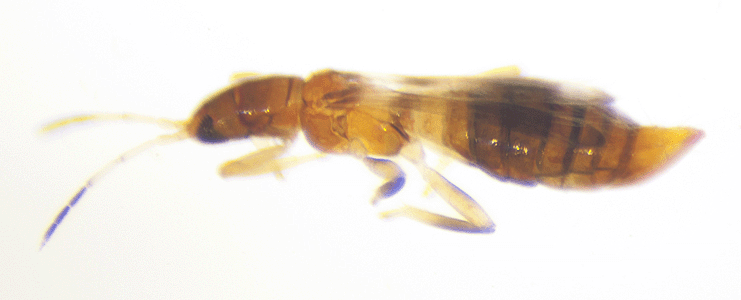
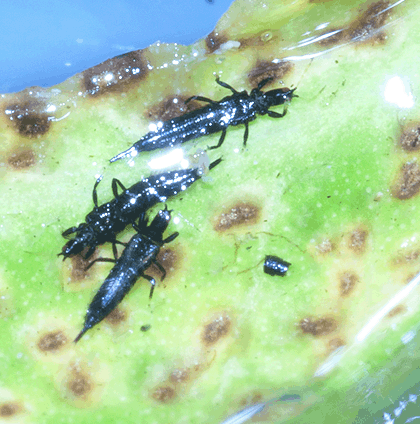
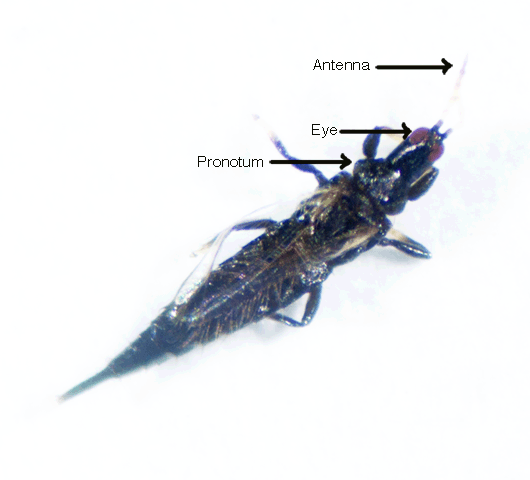 Thrips feed on a variety of plants and animals by puncturing the host with their rasping mouthparts and sucking up the fluids. The 2- mm long thrips shown here were located inside folded leaves of a
Thrips feed on a variety of plants and animals by puncturing the host with their rasping mouthparts and sucking up the fluids. The 2- mm long thrips shown here were located inside folded leaves of a 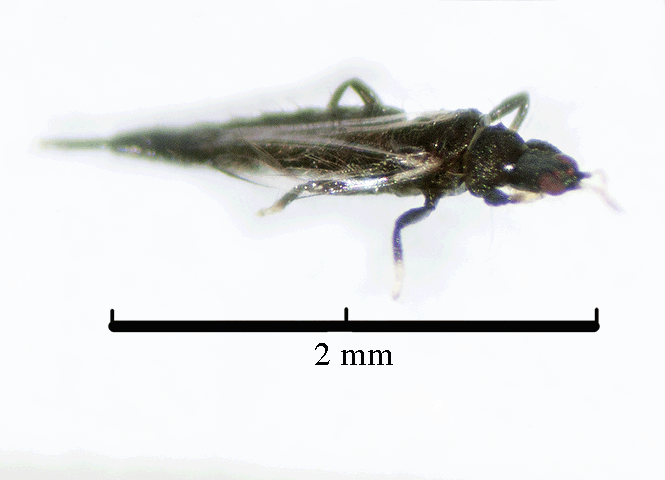 Five thousand species of thrips have been described. Thrips that are capable of flight, like this particular species, have two similar, strap-like pairs of wings with a ciliated fringe. Thrips legs usually end with two tarsal segments and a bladder-like structure that can be everted to allow the insect to walk on vertical surfaces.
Five thousand species of thrips have been described. Thrips that are capable of flight, like this particular species, have two similar, strap-like pairs of wings with a ciliated fringe. Thrips legs usually end with two tarsal segments and a bladder-like structure that can be everted to allow the insect to walk on vertical surfaces. 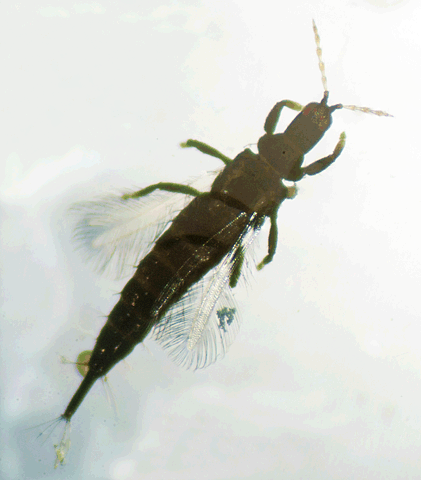 Characteristics of this particular species include red eyes, a bulging pronotum, and pale yellow tarsal segments and antennae. The rest of the insect is black.
Characteristics of this particular species include red eyes, a bulging pronotum, and pale yellow tarsal segments and antennae. The rest of the insect is black.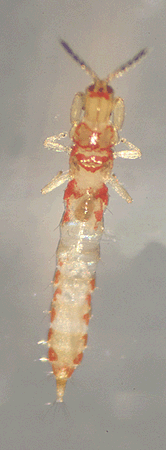 Phlaeothripidae is a family of thrips with 3,500 known genera worldwide. They are a very diverse group. Some feed on fungal spores, others on leaves, causing the production of galls by the host plants. Others live on flowers and mosses. Some are predators of mites and coccids. A few are pollinators.
Phlaeothripidae is a family of thrips with 3,500 known genera worldwide. They are a very diverse group. Some feed on fungal spores, others on leaves, causing the production of galls by the host plants. Others live on flowers and mosses. Some are predators of mites and coccids. A few are pollinators.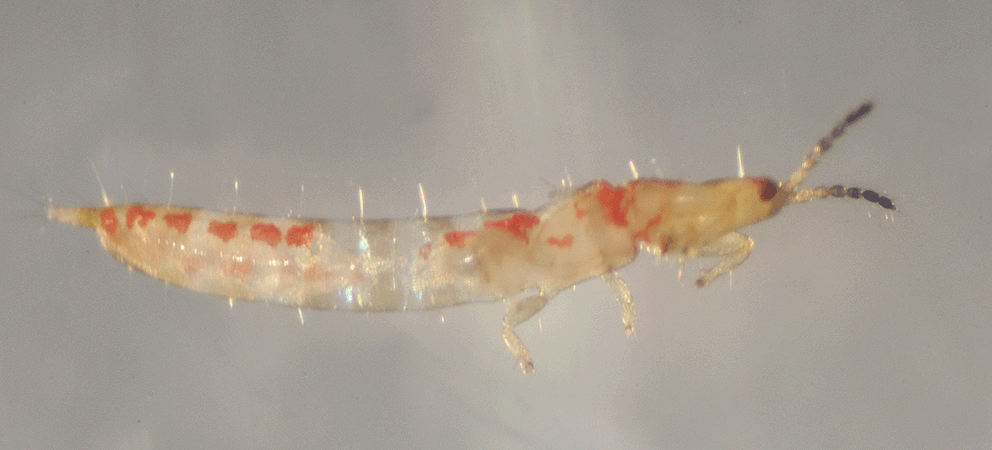
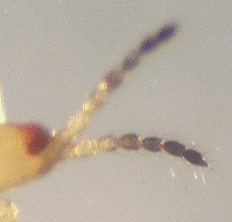
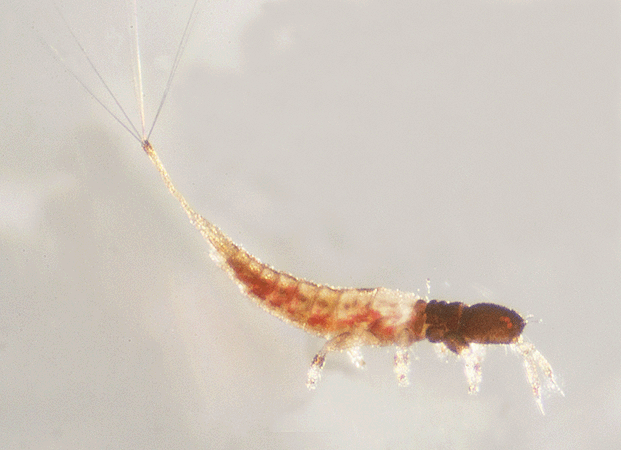 On December 19, 2014, this 1 mm long thrips and several others like it were living in leaf litter under a citrus tree in the northeast corner of the Smith Preserve. Unlike others shown on this web page, this species had a dark head, prothorax (first segment of the thorax), coxa and femur on the first pair of legs, and tip of its antennae.
On December 19, 2014, this 1 mm long thrips and several others like it were living in leaf litter under a citrus tree in the northeast corner of the Smith Preserve. Unlike others shown on this web page, this species had a dark head, prothorax (first segment of the thorax), coxa and femur on the first pair of legs, and tip of its antennae. 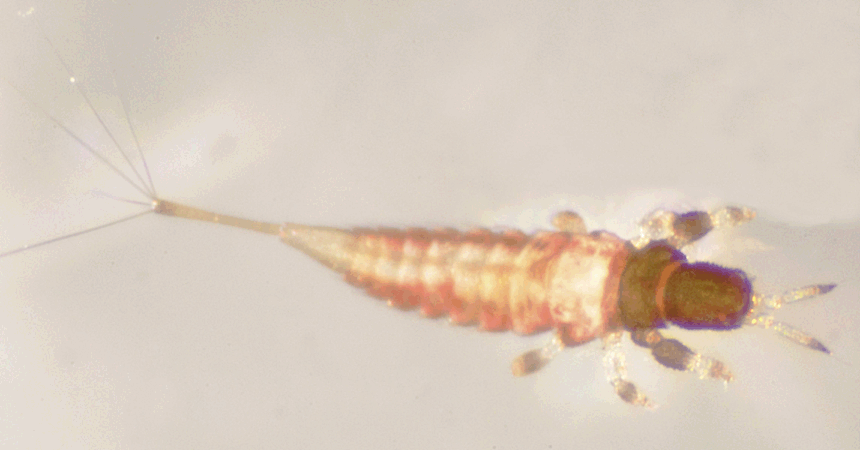
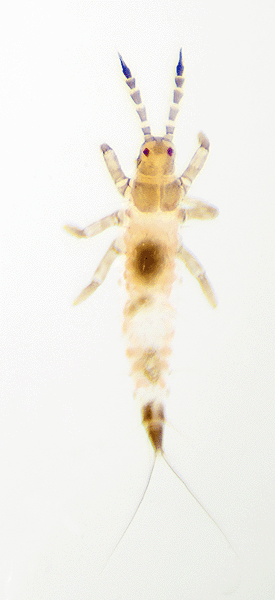
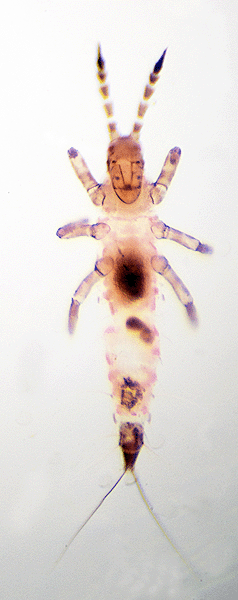
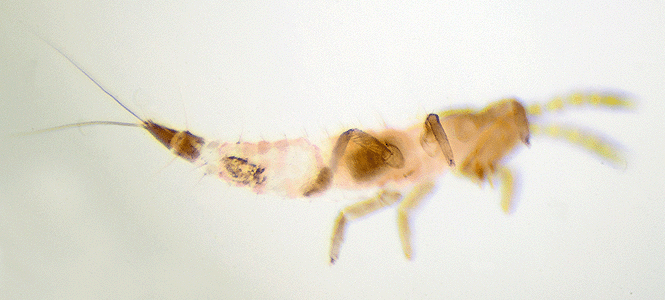
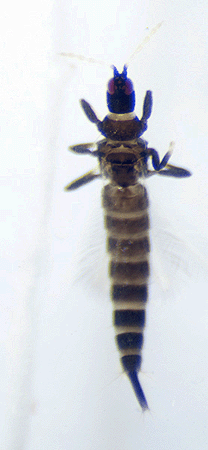
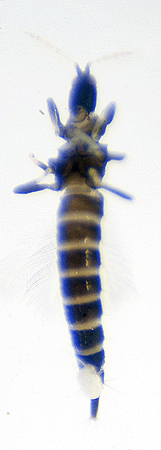
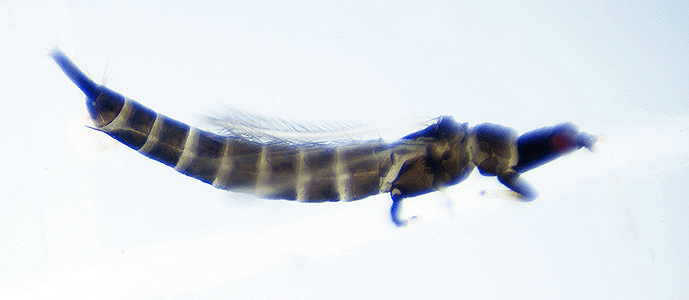
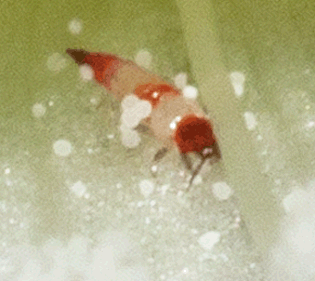
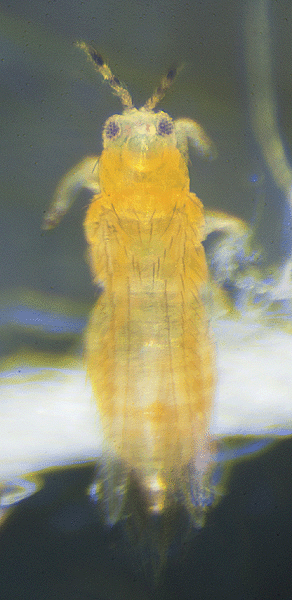
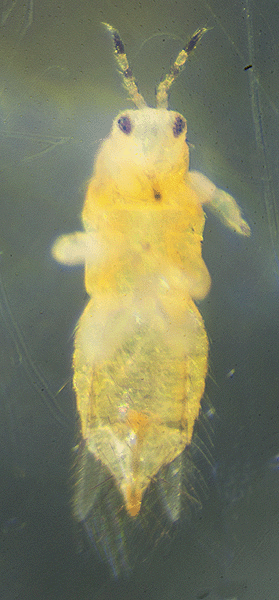
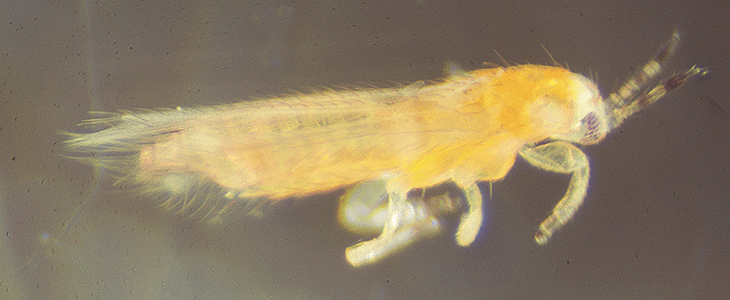
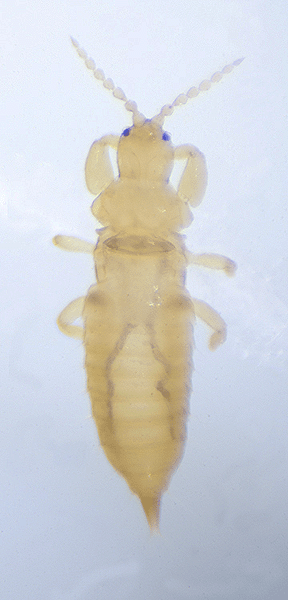
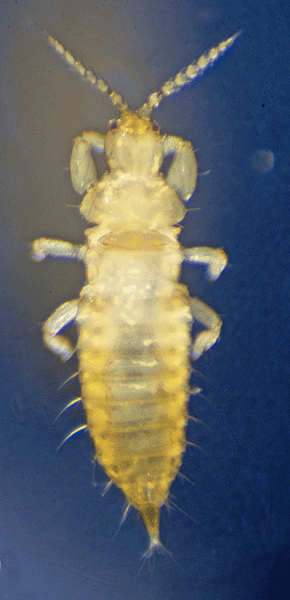
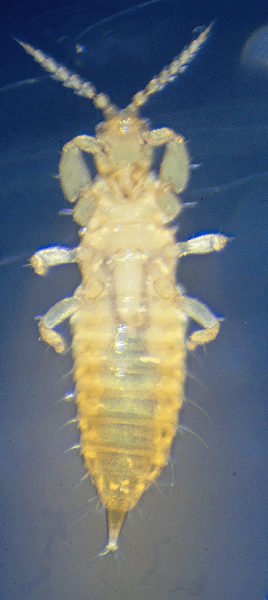 The thrips was isolated from the litter using a Berlese funnel. These photographs were created using photomicroscopy. The first two photographs are dorsal views using two different background colors to emphasize different details in the specimen. The third image is a ventral view.
The thrips was isolated from the litter using a Berlese funnel. These photographs were created using photomicroscopy. The first two photographs are dorsal views using two different background colors to emphasize different details in the specimen. The third image is a ventral view.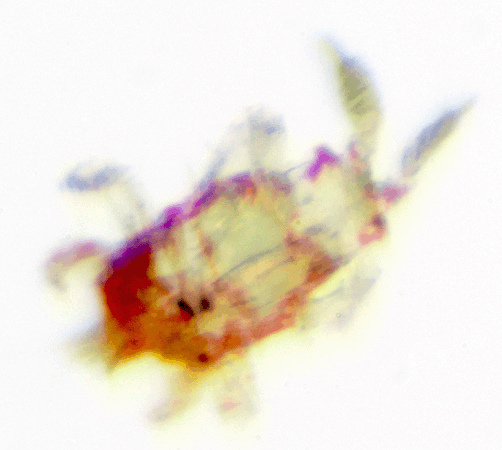
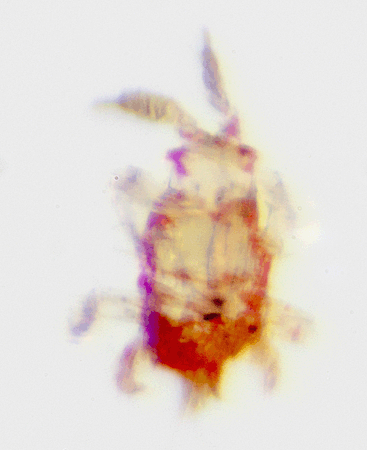
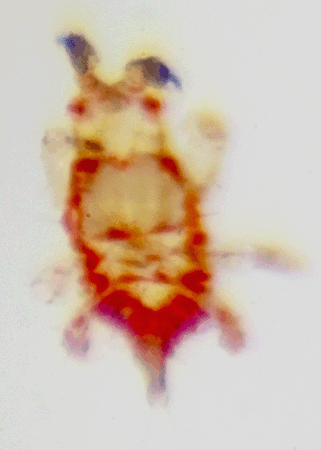
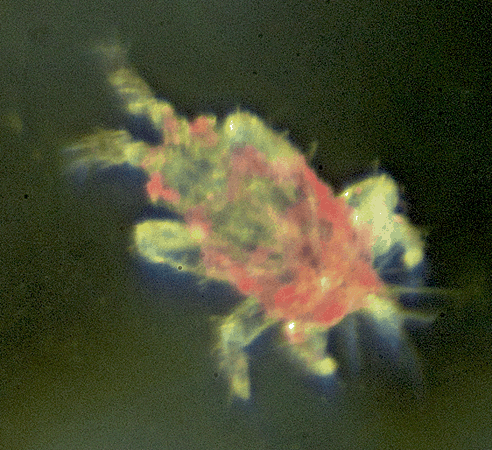
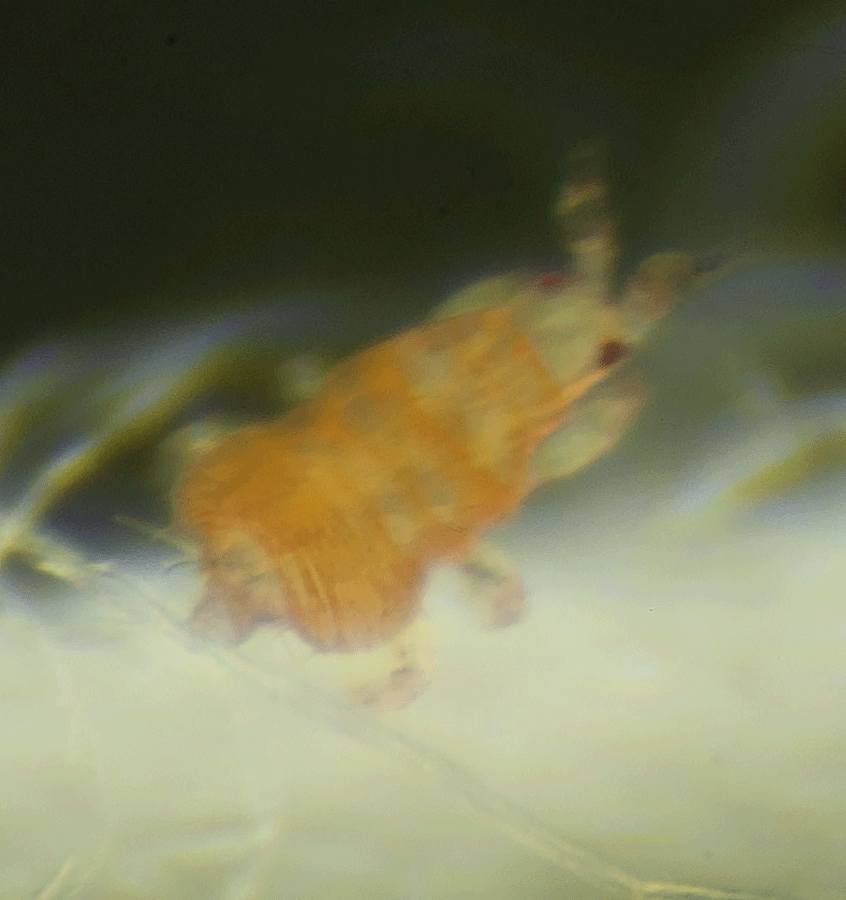
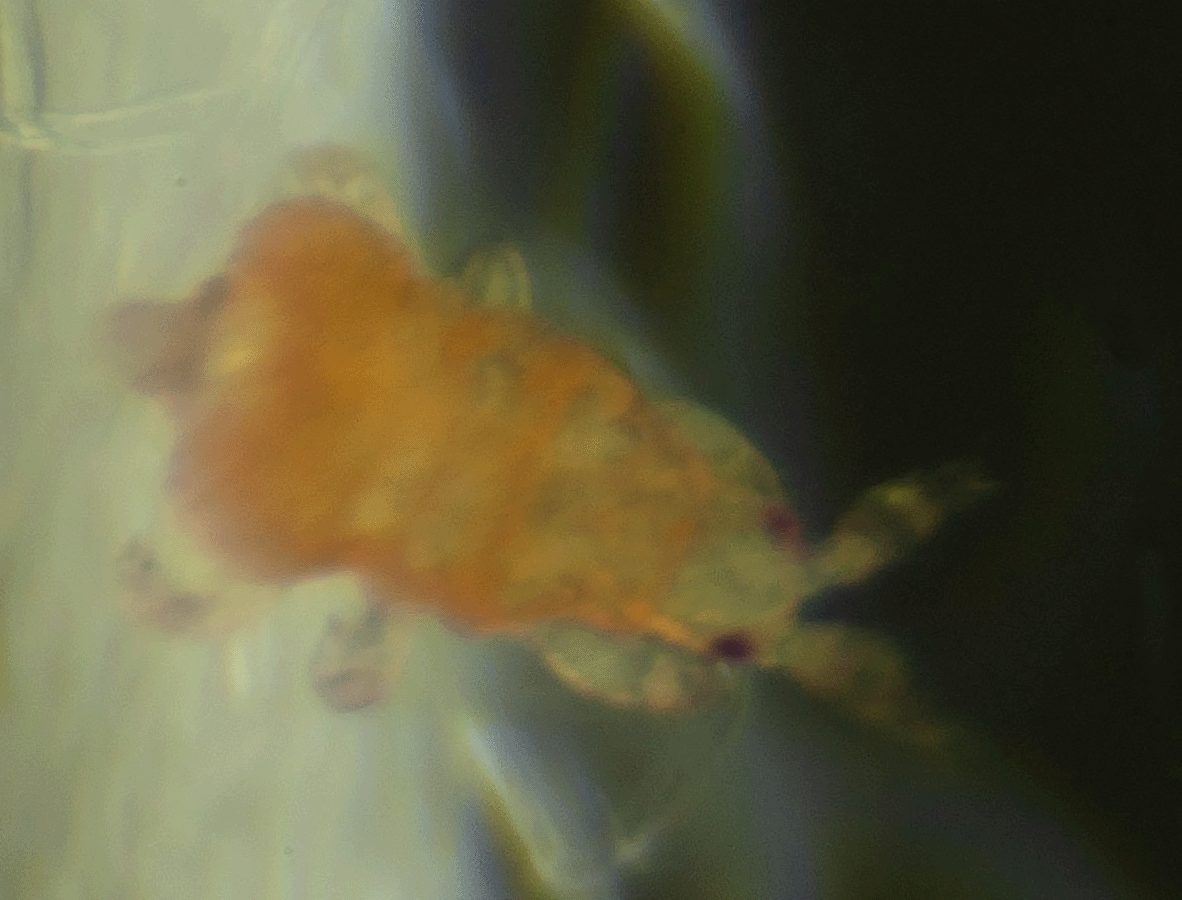
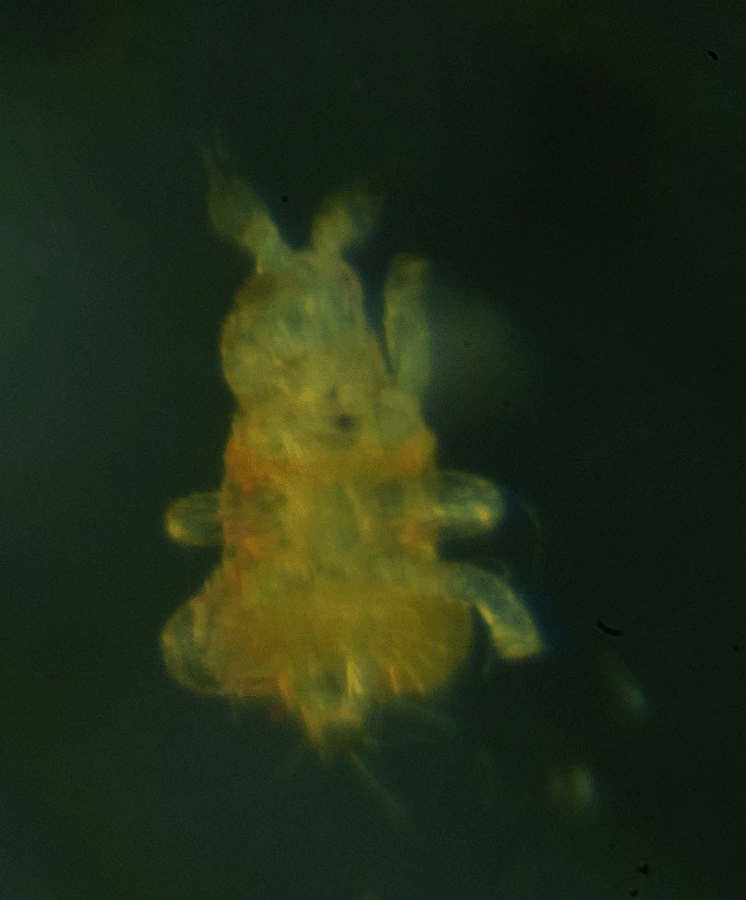
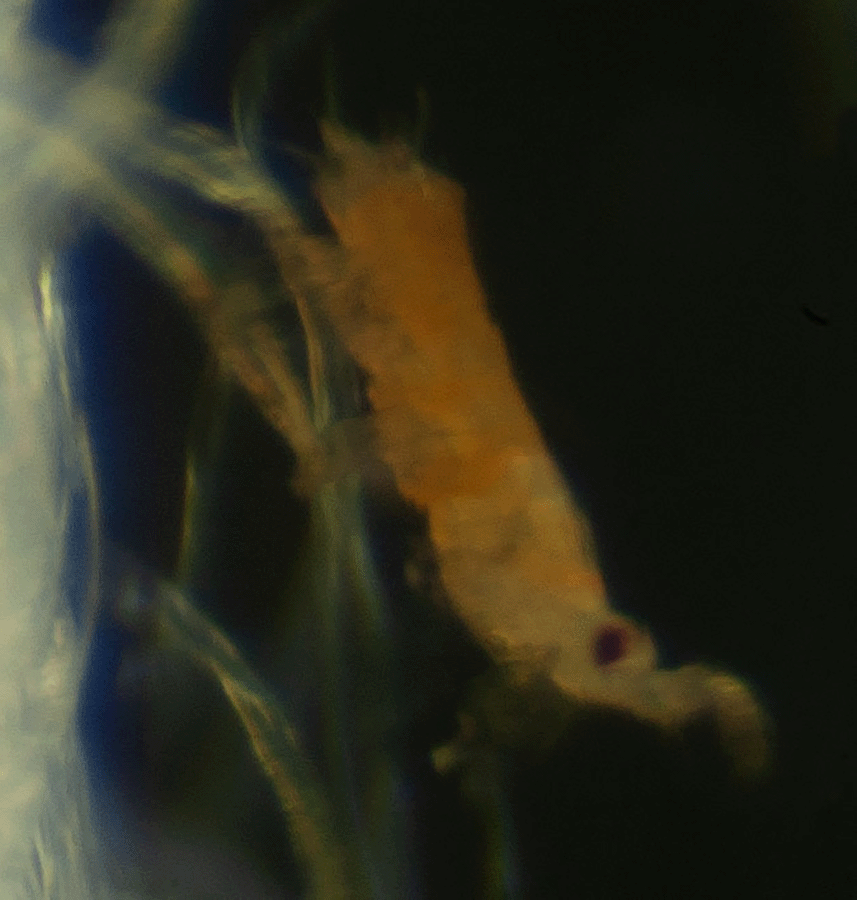
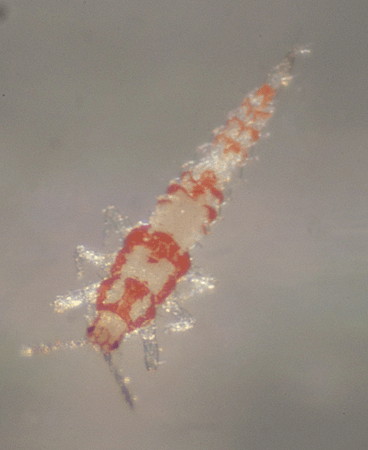 On December 19, 2014, 20 thrips similar to this 1 mm long individual were found in the same leaf litter collection as the thrips that is described earlier.
On December 19, 2014, 20 thrips similar to this 1 mm long individual were found in the same leaf litter collection as the thrips that is described earlier. 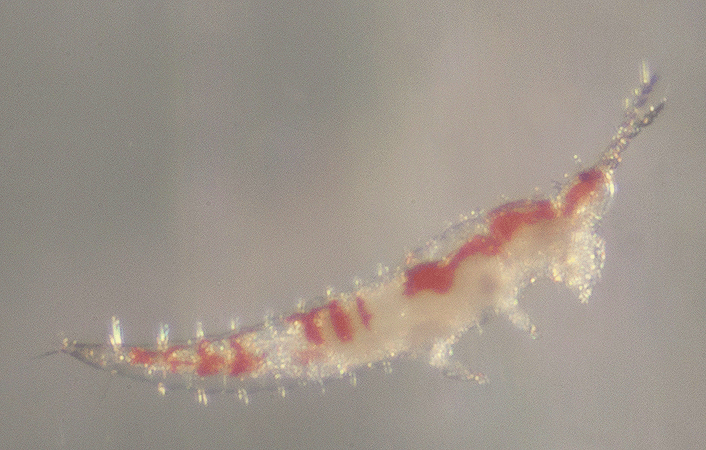
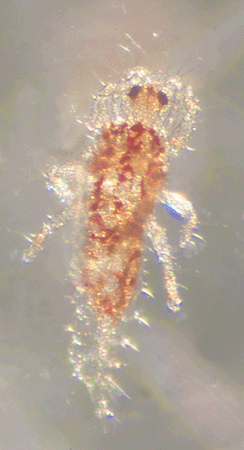
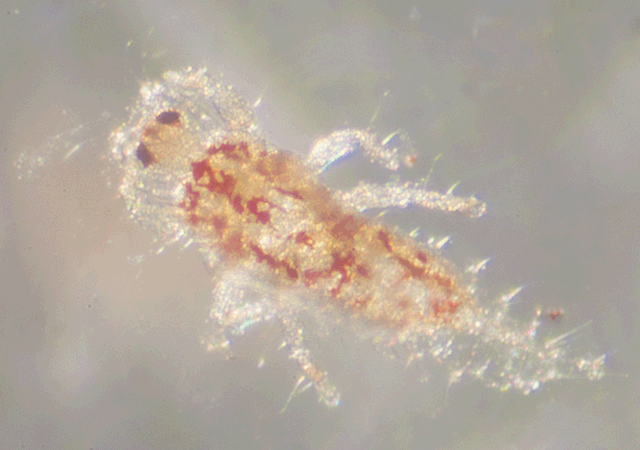

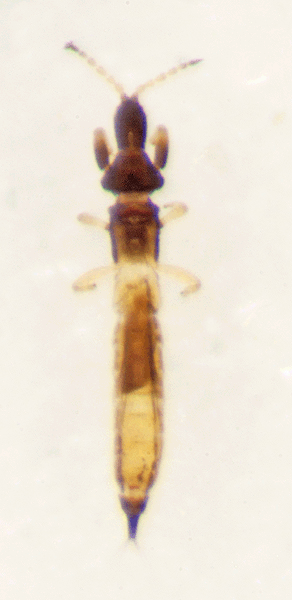 This 1.5 mm long thrips was living in pine needle litter collected beneath a group of
This 1.5 mm long thrips was living in pine needle litter collected beneath a group of 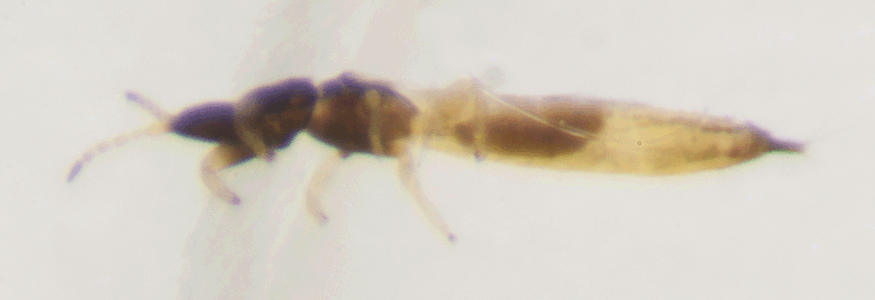
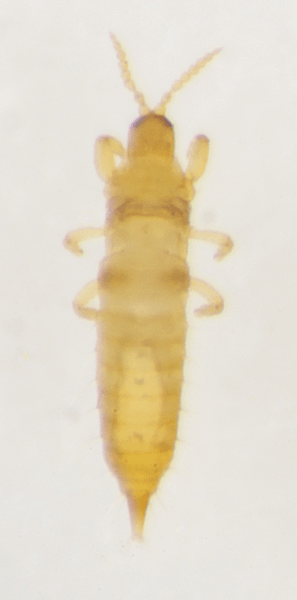
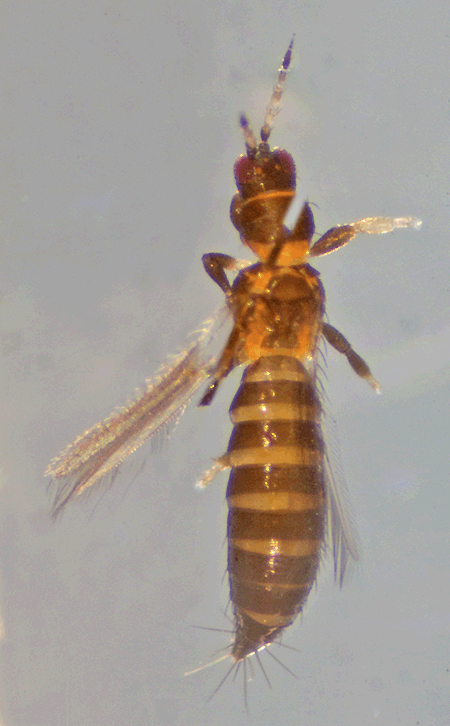
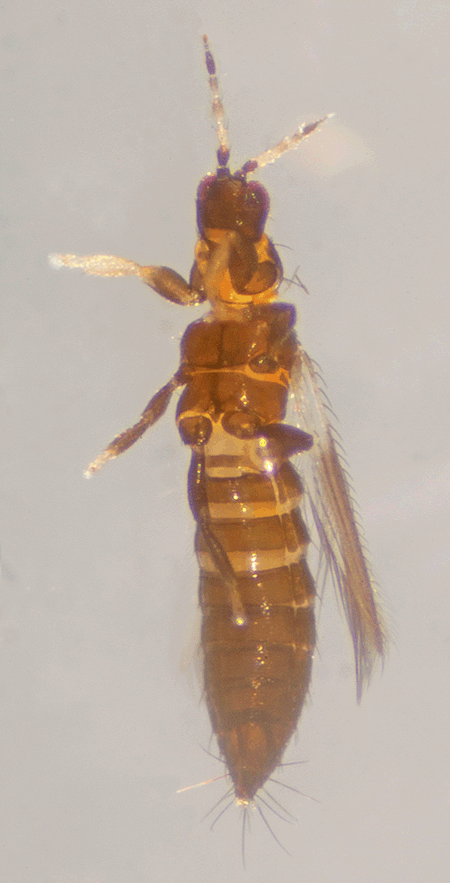
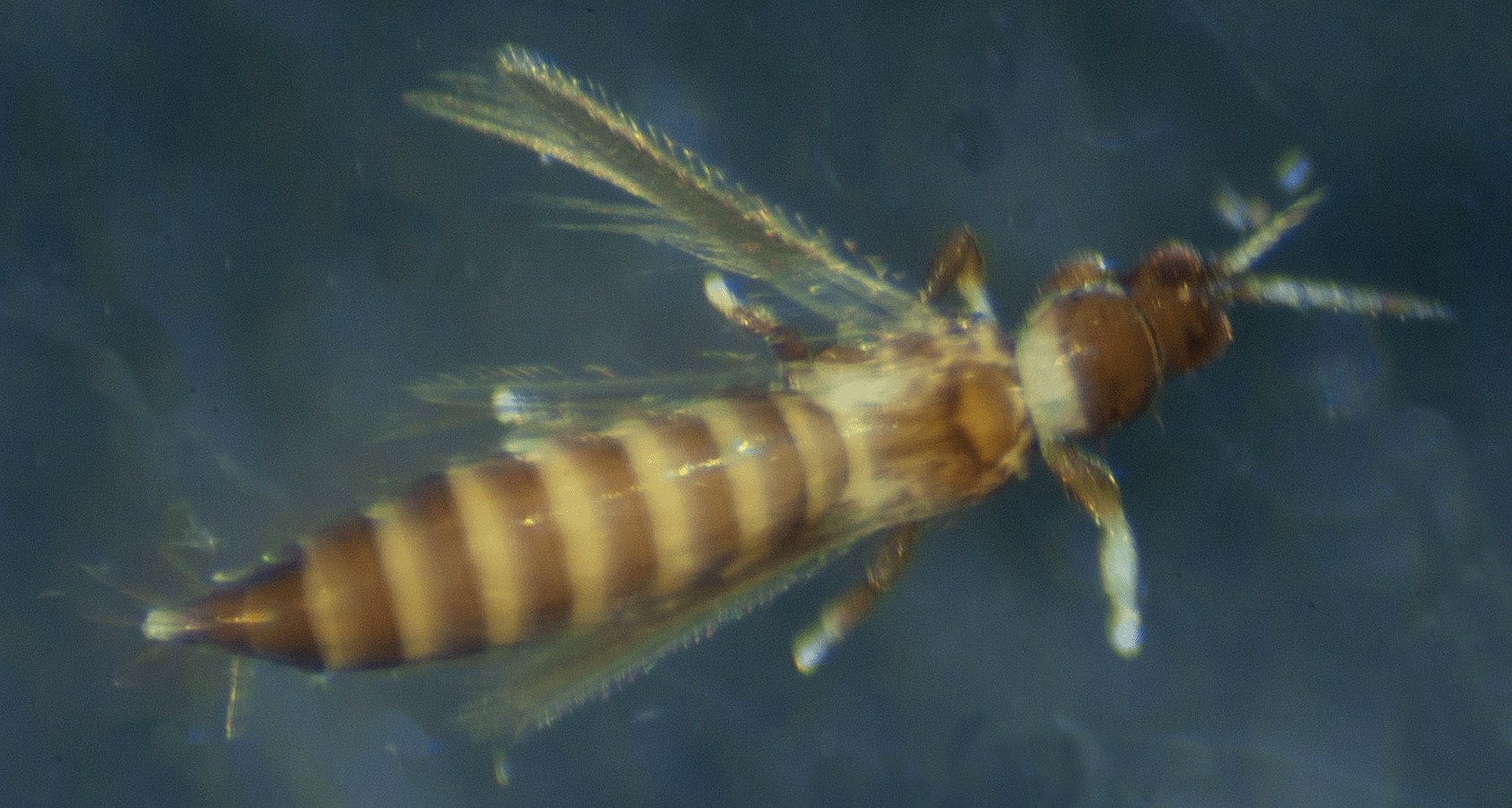
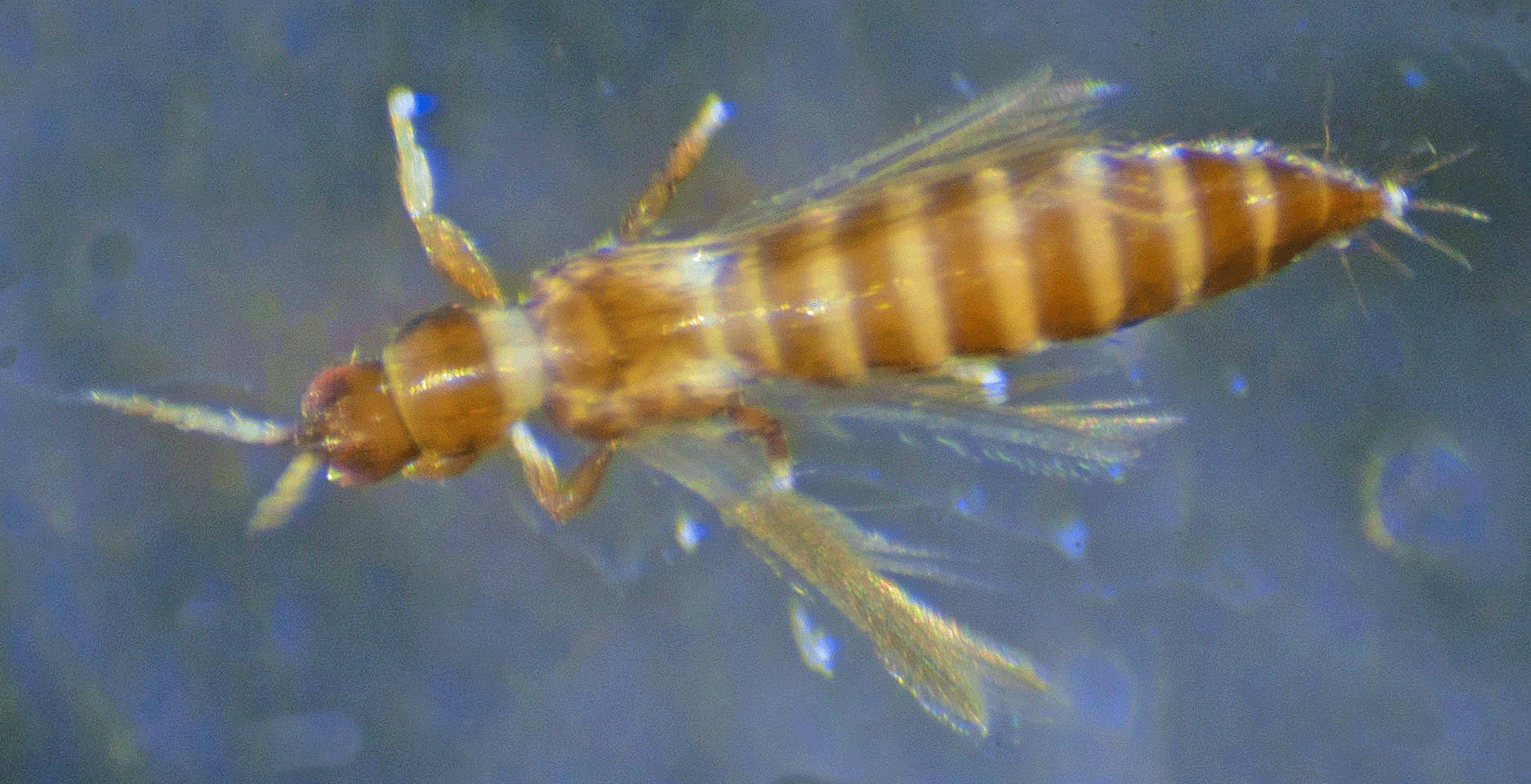
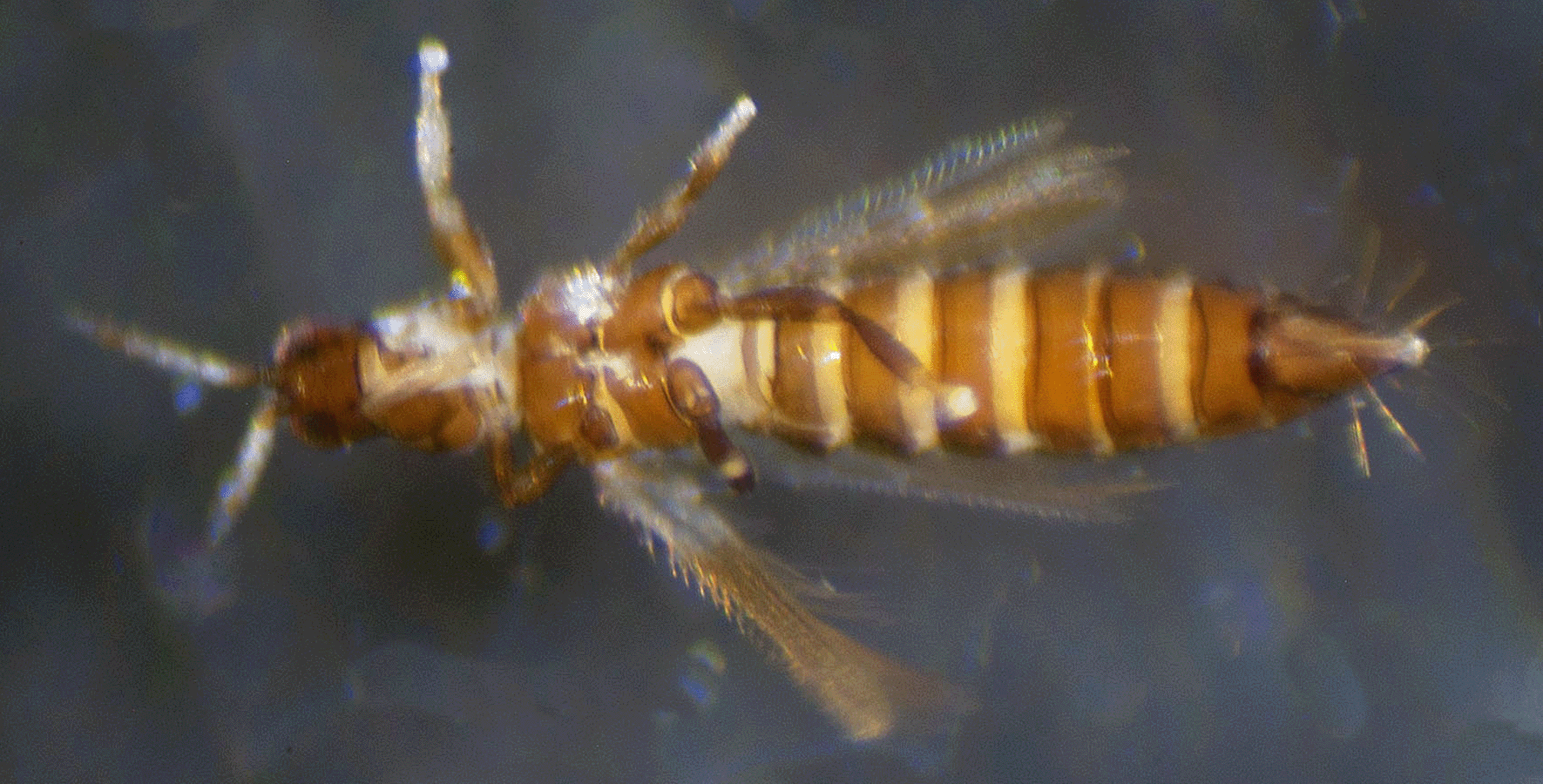
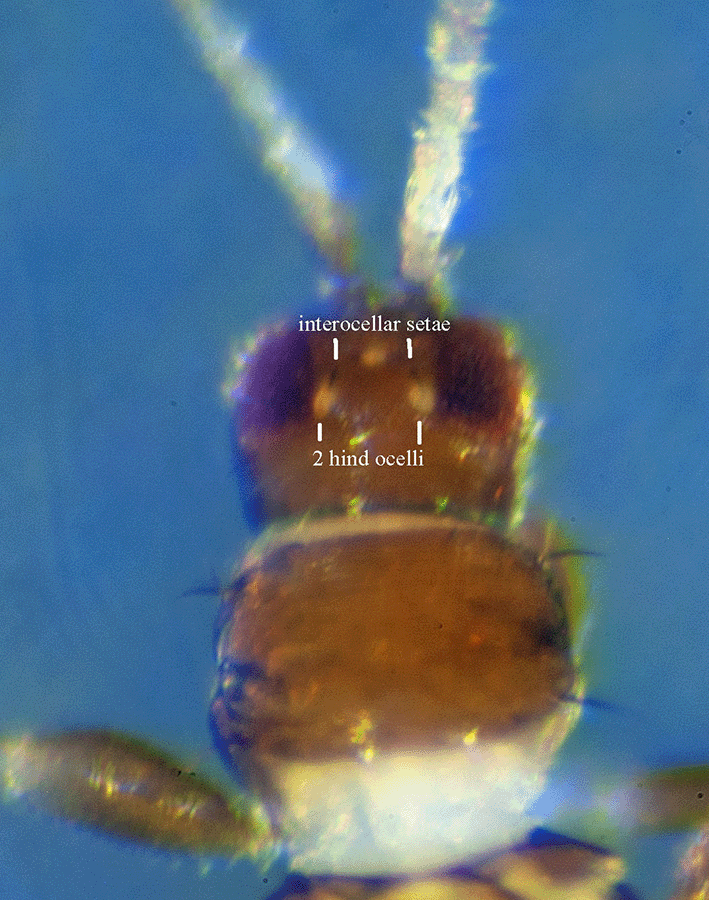
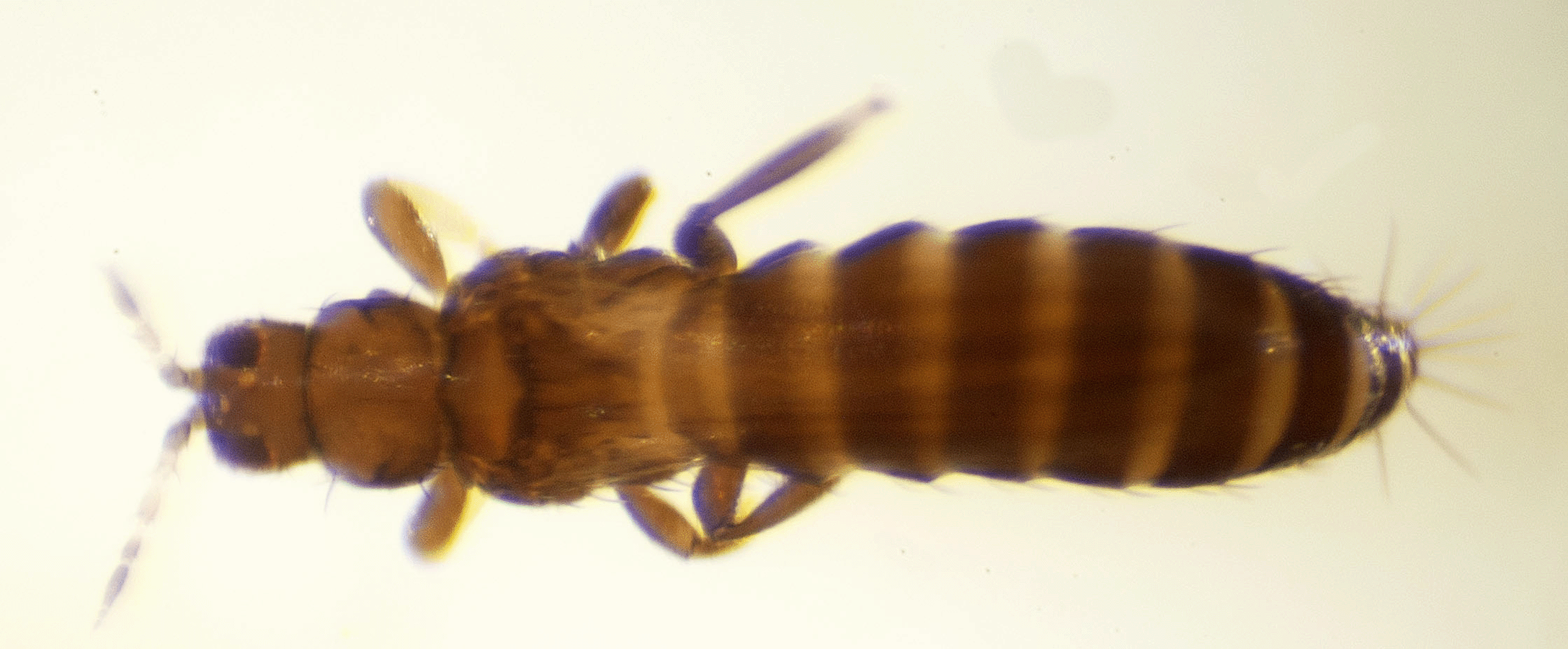
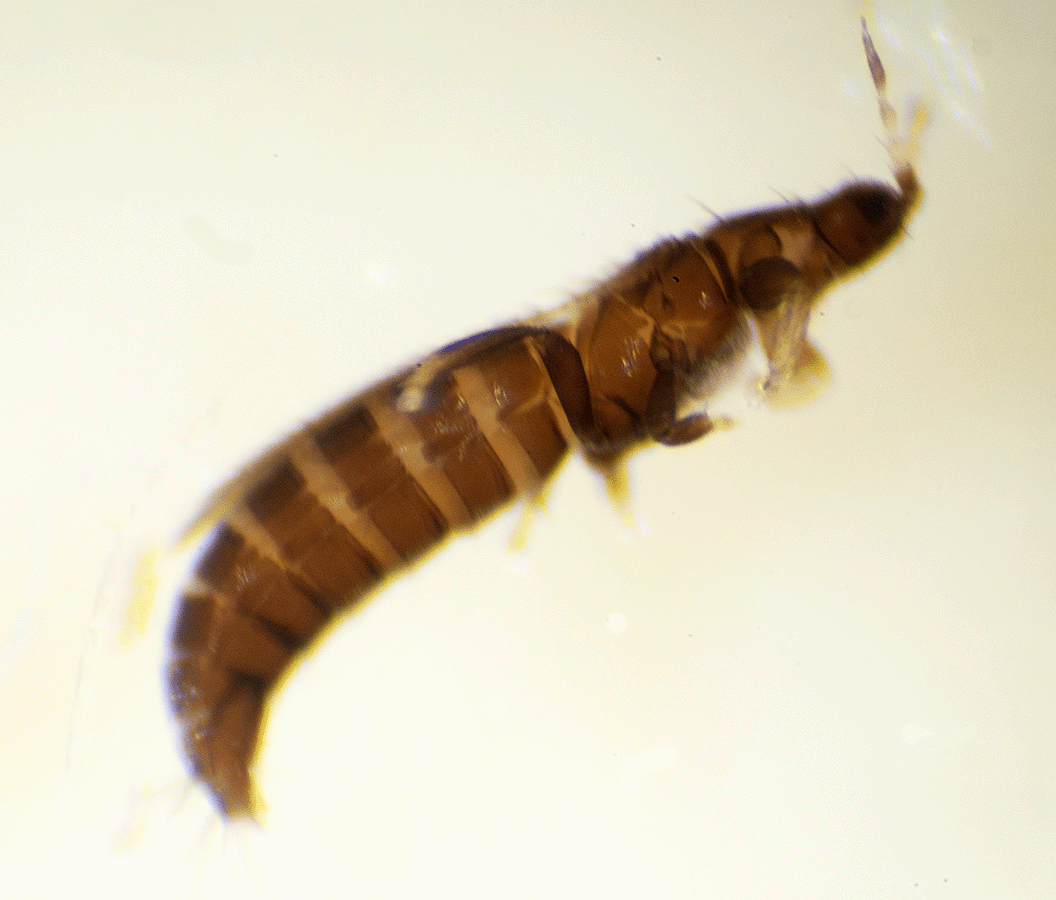
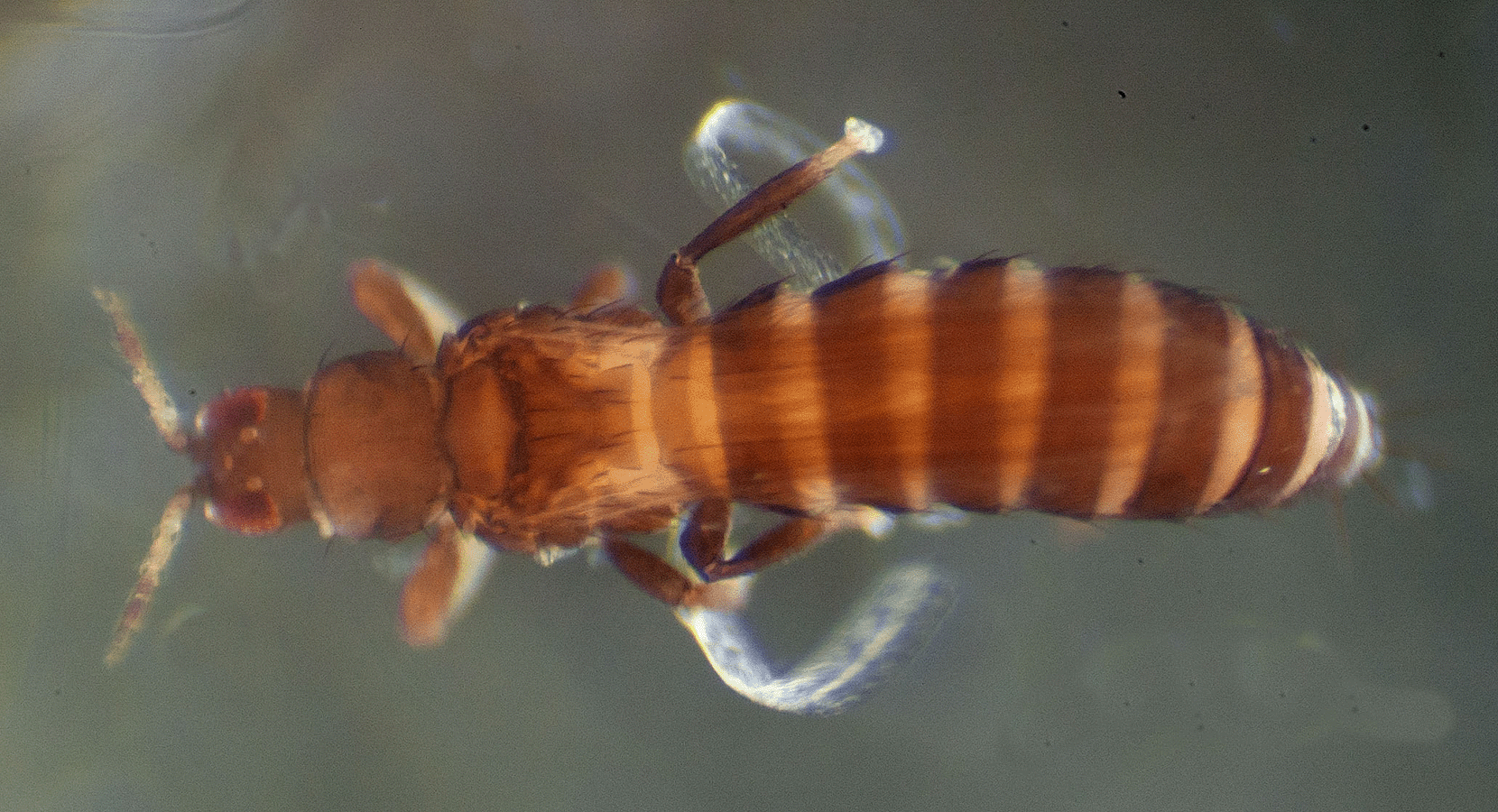
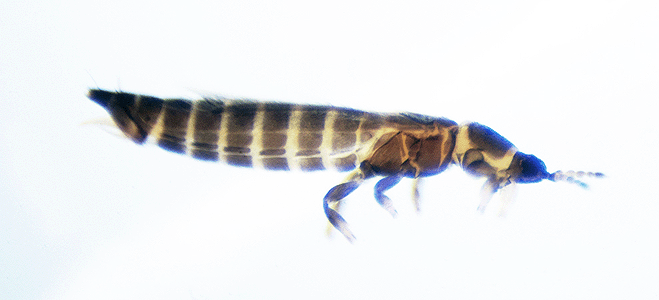
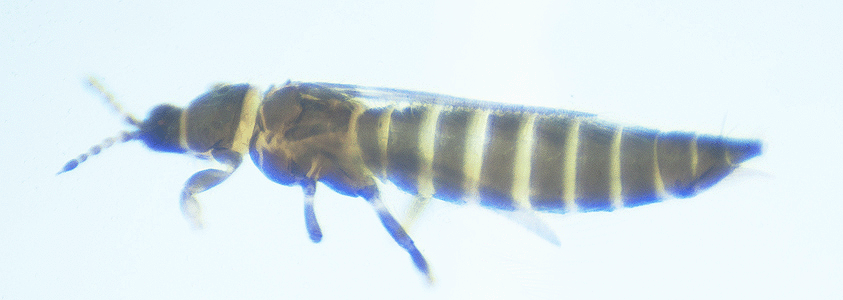
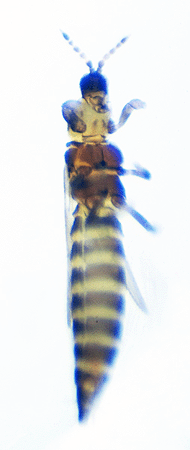
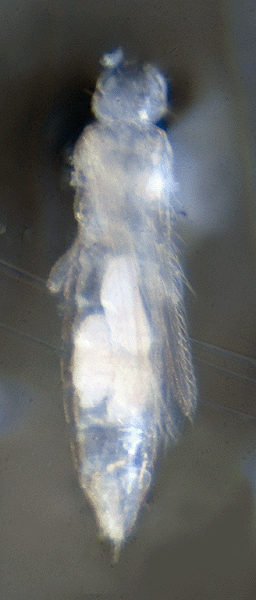
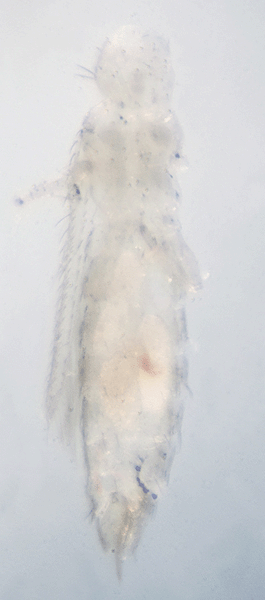
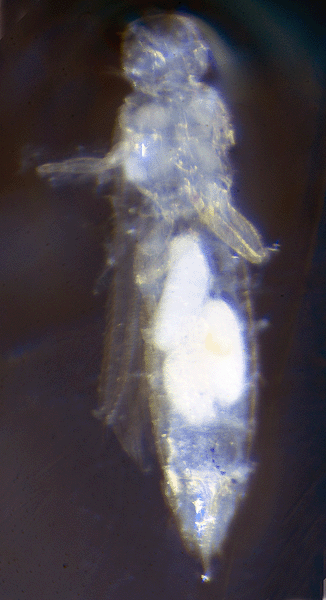
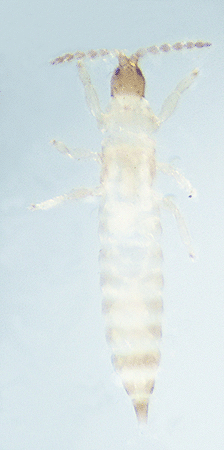
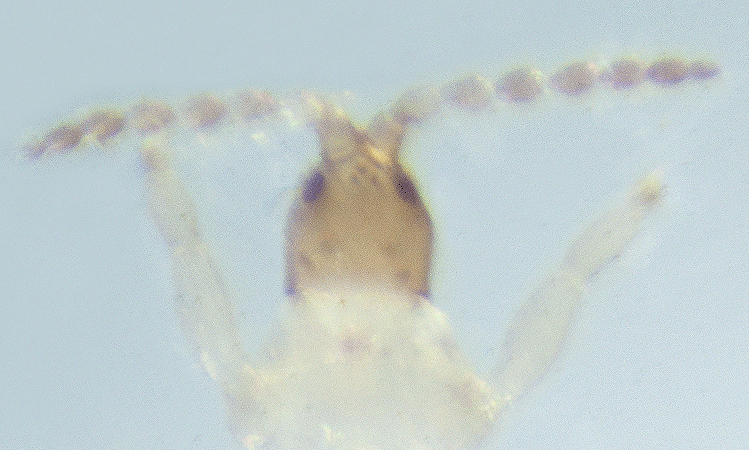 As can be seen in these images, the specimen is generally pale, but it has brown antennal segments and light brown markings along the margins of some thoracic and abdominal segments. The frontal area of the head is bicolored with a brown upper portion and a white bottom portion.
As can be seen in these images, the specimen is generally pale, but it has brown antennal segments and light brown markings along the margins of some thoracic and abdominal segments. The frontal area of the head is bicolored with a brown upper portion and a white bottom portion.